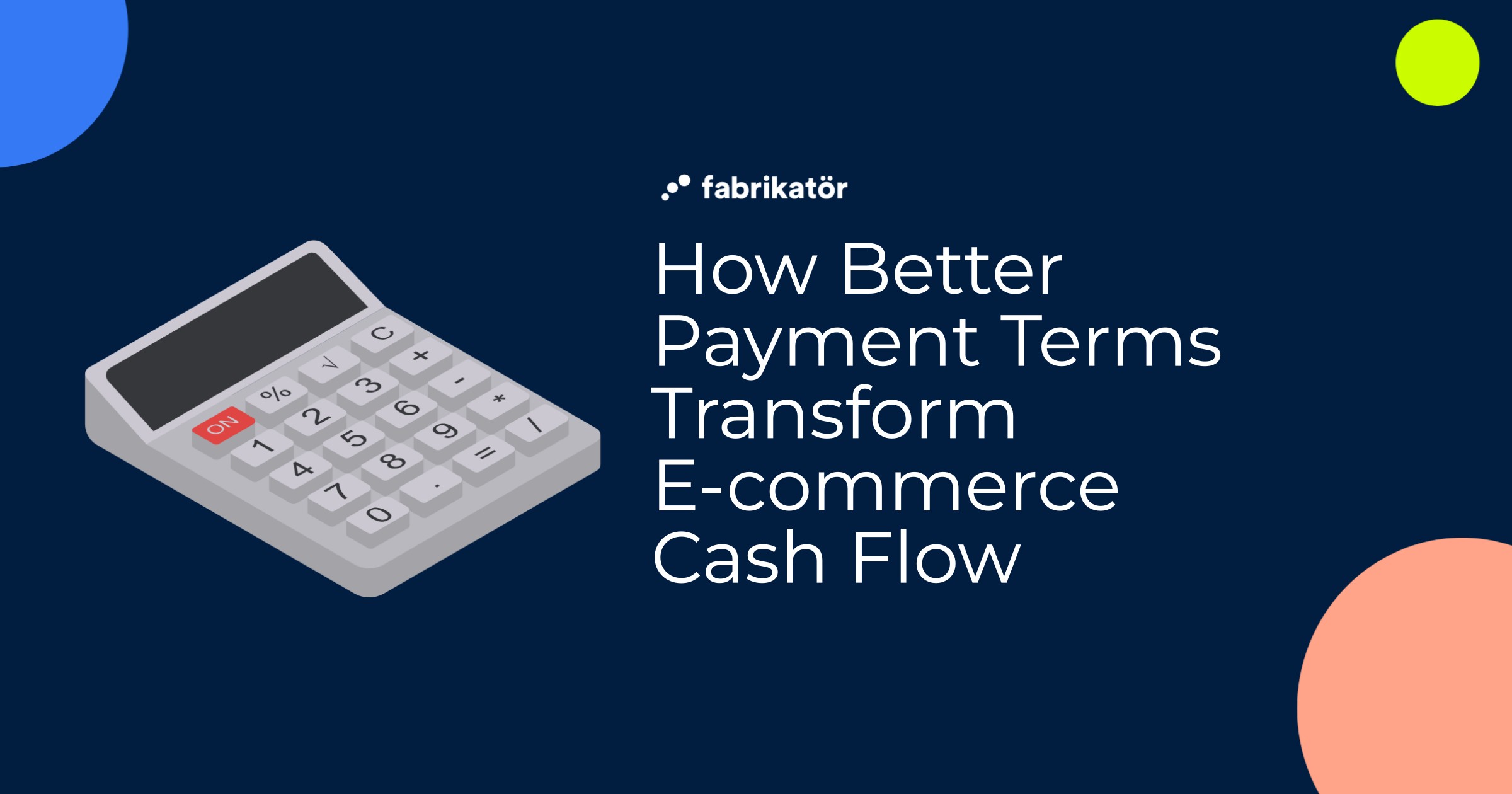eCommerce Inventory Management

In today's highly digitized world, online shopping and, consequently, the sale of products through online platforms are skyrocketing at an astonishing rate. As of 2022, eCommerce already constituted nearly 19% of global retail sales. Forecasts suggest that by 2027, the online shopping sector will contribute to almost a quarter of the entire global retail sales pie. The digital shopping trend is thriving, and it's expected to become even more exciting 👀 in the future.
With the customer base booming and the market on a wild growth spree, eCommerce stores need to up their game in managing processes. A solid inventory management process is not just a plus—it's becoming the MVP with each passing day. 🛍️
🤔 Alright, but why exactly? Let's take a closer look together: What does inventory management mean for eCommerce stores? ✍️
What is Inventory Management for an eCommerce Store?

Inventory management refers to the process of ordering, storing, using, and selling a company's inventory according to Investopedia. In eCommerce, inventory management means keeping a close eye on how you order, store, and use the products you sell online. The only real difference between inventory management in general and eCommerce inventory management is that eCommerce exclusively deals with the products you sell over the internet. 🔄
Inventory management in eCommerce is the backbone of a smooth and efficient operation. It's the process that ensures your shelves are stocked just right – not too much, not too little. Picture it as the guardian of order, preventing chaos and maintaining a seamless shopping experience for your customers. ✨
Why is Your eCommerce Inventory Management Important?

Managing inventory for your eCommerce business is important for several reasons. Let’s go over them together:
- 🔄 Maximized Product Availability: Effectively managing inventory ensures that products are stocked efficiently. This prevents overstocking or stockouts, optimizing overall operational efficiency.
- 🤝 Customer Satisfaction: Timely deliveries are key to customer satisfaction. Inventory Management helps in meeting customer demands promptly, enhancing their experience and loyalty.
- 💰 Cost Control: Efficient inventory practices prevent excess stock, reducing storage costs, and minimizing the risk of stockouts. It contributes to better cost control and improved profitability.
- 📈 Accurate Financial Reporting: Proper inventory tracking facilitates accurate financial reporting. This is essential for evaluating the financial health of the business, making informed decisions, and attracting potential investors.
- 🔮 Forecasting and Planning: Inventory data aids in forecasting demand and planning for future trends. This proactive approach helps in adjusting stock levels according to market demands.
- ⚠️ Preventing Losses: Inventory Management helps in identifying and addressing issues such as theft, damage, or spoilage, minimizing potential financial losses.
In summary, effective inventory management is the core of a successful eCommerce business, influencing customer satisfaction, cost efficiency, financial stability, and overall business growth.
What Does eCommerce Inventory Management Mean for a Shopify Store, a Small Business, and Retail Store?

Inventory management plays a pivotal role in the success of a Shopify store, a small business, and a retail store if you’re in eCommerce, each needing its own unique approach and perspective. Here's a breakdown of what it means for each:
🏪 Inventory Management for a Shopify Store
Starting your eCommerce journey on platforms like Shopify offers its advantages. If you run a Shopify store, understanding the importance of inventory management is crucial due to:
- Optimized Product Availability: Ensure your Shopify store maintains optimal stock levels, preventing overstocking or stockouts.
- Improved Customer Experience: Timely and accurate product availability contributes to customer satisfaction, building trust and loyalty among Shopify customers.
- Competitive Edge: Stay ahead of the competition by swiftly responding to market demands and trends with efficient inventory practices.
It's essential to know that while eCommerce platforms are fantastic for order management, they might lack some advanced inventory tracking features just as backorder, preorder, demand forecasting, replenishment and so much more. For functional and effective inventory management, you can use successful inventory tools just like Fabrikatör. As it is fully automatized for your Shopify store, you can benefit from these features and enjoy their benefits.
💼 Inventory Management for a Small Business
Running a small business? Do you think managing inventory is a waste of time and money? Let’s see what the data says.
The U.S. Small Business Administration reveals that a poorly handled inventory system is a major reason many small businesses bite the dust. 🤷♀️ Surprisingly, 46% of small businesses with 11 to 499 employees don't track their inventory. 👀
Managing your inventory effectively is crucial, even if your business is small. Here's why…
- Financial Ease: Think of inventory management as your small business's financial sidekick, ensuring you sail smoothly and make informed decisions.
- Smart Adaptation: Your inventory data is like a superhero cape, helping your small business predict demand trends and adapt to market changes effortlessly.
- Avoiding Money Pits: Spotting and tackling issues early on is your small business's way of dodging financial hurdles. It's like having a protective shield in your pocket!
📌 Did you know that even if you don't sell online, you can still manage your physical store's inventory with Shopify POS? Fabrikatör provides unique inventory features for your physical store using Shopify POS, helping you manage your inventory smartly. Try it out now!
🛒 Inventory Management for a Retail Store
Efficient inventory management is crucial for retail stores to thrive. Here's why:
- Optimized Stock Levels: Proper inventory control ensures that retail stores have the right products in the right quantities, preventing overstocking or stockouts.
- Customer Satisfaction: Retail stores benefit from satisfied customers due to readily available products, contributing to positive reviews and word-of-mouth referrals.
- Competitive Edge: Efficient inventory practices give retail stores a competitive edge, as they can respond swiftly to market demands and trends.
In summary, regardless of the scale or platform, effective inventory management is key for Shopify stores, small businesses, and retail stores, influencing operations, customer satisfaction, and overall business success.
Using Excel for eCommerce Inventory Management

Are you sticking with Excel for inventory management? While it might work okay for your small eCommerce store that's just starting, let's talk about why it might be disadvantageous as you aim to grow. 📉
Human Errors: Manual data entry can lead to mistakes and cause misleading reports.
Delayed Updates: Updating data manually can result in delays, and affects your decision-making process.
Misleading Reports: Inaccuracies and limited collaboration can lead to unreliable inventory data & reports.
Limited Forecasting Capabilities: Without strong forecasting, you're basically guessing about future demand. This can lead to stock shortages or excess inventory, hurting your profits and customer satisfaction.
To overcome these challenges, you may consider integrating with third-party tools like Fabrikatör for better inventory management, accurate reporting, and forecasting capabilities.
📌 You can find an Inventory Management Excel Spreadsheet Template here.
Challenges of eCommerce Inventory Management
When not applied properly, you may experience some challenges through inventory management in your eCommerce process. What could these be? 🕵️
Meeting Demand & Stock Issues
Without understanding inventory needs and customer shopping habits, you risk either not meeting demand or overestimating stock requirements which results in extra costs or outdated products.
Wrong Financial Reports
If your financial reports are inaccurate, it can lead to misunderstandings about your business's health. Plus, without analyzing inventory data, spotting trends becomes tricky, making it hard to make smart decisions.
Supplier Issues
Miscommunication between suppliers, warehouses, and retailers can create significant problems. Besides, these issues can cause delivery delays and also result in unhappy customers.
Absence of Reliable Data
Growing your eCommerce business requires tracking crucial data about inventory movements.
Understanding what sells, what doesn't, and how inventory fluctuates over time is essential for boosting profits and meeting customer needs.
📌 To avoid challenges when selling on Shopify, you can benefit from the tips we mentioned in Backorder Management on Shopify & Best Practices.
Tips on How to Manage eCommerce Inventory Efficiently
As you handle different 'management' processes, remember, that extra tips and insights can be the catalyst for your store's seamless operation. We'll be covering a lot of tips, so buckle up for the ride ahead!

ABC / XYZ Analysis
The XYZ / ABC analysis is an inventory management method to classify products based on their importance or value to the business. You can categorize items into different groups, typically labeled XYZ and ABC, based on their demand, cost, or how frequently they are used.
- XYZ Analysis: This method classifies items based on their demand variability. While X represents the products that have highly unpredictable or random demands, Y represents more stable products. On the other hand, Z represents reliable products with predictable demand.
- ABC Analysis is a method used to classify products based on their significance to the business. "A" items are high-value and contribute to a significant portion of the revenue, while "B" items have moderate importance, and "C" items are low-value with minimal impact.
By categorizing items in this way, businesses can prioritize their inventory management efforts, focusing more attention on high-value or high-demand products while allocating fewer resources to low-value or low-demand items. These methods are helpful for inventory control optimization.
Safety Stock
You can keep extra stock for unexpected demand increases to maintain customer satisfaction and avoid being out-of-stock. Learn how to calculate it. Even though safety stock is a commonly used method, it is not the most optimized one.
To effectively run inventory management, the goal is to keep the ideal level of stock and prevent being out of stock and overstock.
Reorder Point
The reorder point is a method aimed at eliminating the unnecessary cost that arises due to the storage of more than the amount of the product. Thanks to this method, only products that meet customer demands are kept in warehouses. Let’s calculate it together.
Just-in-Time
By receiving inventory as needed (Just-in-Time) you can reduce storage costs and prevent overstocking.
Demand Forecasting
Predict future demand based on sales data to anticipate customer needs accurately, optimizing inventory levels and minimizing excess stock or stockouts.
📌 To use all these techniques effectively, eCommerce platforms alone won't get the job done. But with the right inventory management tool, you can nail them all and dominate your inventory game.
Inventory Management Software for eCommerce Inventory Management
Choosing the right inventory sets the stage for success in your business journey. Whether it's a retail outlet, a small business, or a longstanding Shopify store, picking the right inventory is key because it keeps things running smoothly, makes customers happy, and boosts profits.
📌 Why Fabrikatör for inventory management? Because Fabrikatör maximizes efficiency with minimal effort while managing your inventory. It handles calculations, provides recommendations, and keeps tabs on your stocks, all on your behalf. Our priority is ensuring you manage your inventory effectively and come out of the process with profit! 🤝💸
Fabrikatör helps you to manage your inventory successfully with:
- 📊 Advanced Demand Forecasts
- 📈 Dependable Inventory Data & Reports
- 🛍️ Backorder / Preorder Support
- 🔄 Automated Stock Replenishment
- ... and much more!
🎉 Ready to explore Fabrikatör's advanced features? Get a demo right away!










